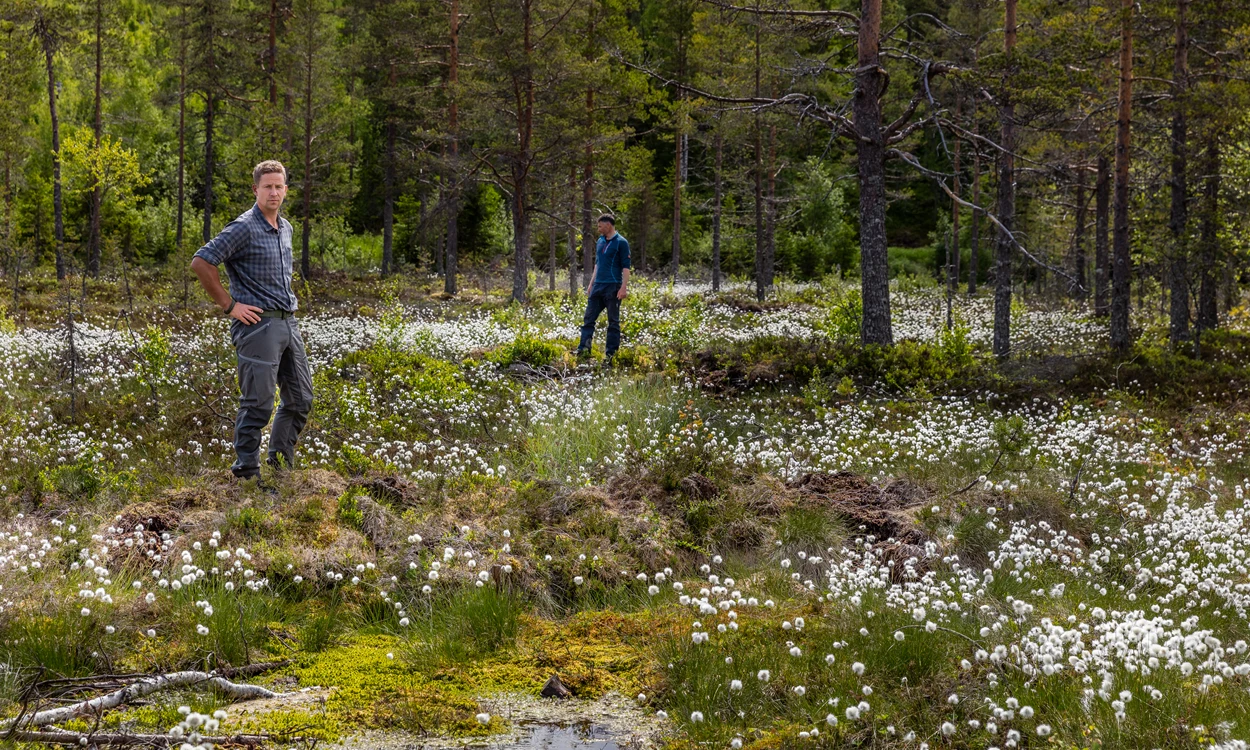On World Water Day, held annually on 22 March, the United Nations focuses the world’s attention on the importance of freshwater and inspires action to protect it. It is a day that this year, Johan Granås, Sustainability Director at Holmen Board and Paper, wants to use to focus on the importance of safeguarding wetlands.
“Water is an important resource for us,” says Granås. “We need a lot of clean water to produce our boards. But we are also concerned about the loss of water ecosystems that are essential for healthy biodiverse forests, which in turn help produce natural clean water for us all. Forests support the natural clean water production cycle by regulating precipitation, evaporation and flows and filtering out pollution. I believe that our customers are also very concerned about global biodiversity loss. I hope, therefore, that the project we are supporting to restore wetlands in Swedish forests shows how seriously we are taking our responsibility to safeguard biodiversity when we source our raw materials.”
For centuries, large landowners around the world, including Holmen, drained wetlands to create more arable land for agriculture and tree plantations. It was once seen as a positive practice.
But wetlands are among the most effective carbon storage sinks on Earth. Draining wetlands releases the carbon stored inside them into the atmosphere as carbon dioxide emissions. The Swedish Environmental Protection Agency estimates that 11.6 million tonnes of carbon dioxide is emitted yearly from previously drained Swedish wetlands. This is the equivalent of the annual emissions from Swedish car traffic.

Johan Granås, Sustainability Director at Holmen Board and Paper and Mikael Äng, Nature Conservation Officer at Holmen Forest. Photo: Per Trané.
Wetlands are also rich reservoirs of the biodiversity that is vital for humanity and nature to thrive. About 40% of the world’s plant and animal species depend on wetlands.
“Biodiversity is important for the survival of the planet,” says Granås. “It is the web of life that nature is built on and which we are all completely dependent on. Biodiversity is also essential for a healthy forest. It helps the forest be resilient to things like insect attacks, wildfires and flood damage, all of which can wipe out large areas of forest. And wetlands are an essential part of a forest’s biodiversity. So as well as helping store vast amounts of carbon, wetland restoration helps ensure that the forest survives and thrives going forward. This, in turn, safeguards the freshwater that we need for production and the raw materials that we source from the forests for our customers’ end-use for generations to come.”
The wetland restoration project that Holmen is supporting is being conducted on around 500 hectares of Holmen land by the company’s forestry division Holmen Forest, in collaboration with Hudiksvall Municipality. It involves the rewetting of ditches that had been dug to drain the ground of water. “Quite soon after the flow of water in the ditches is stopped, the wetland returns, and gradually so do the water-dependent plants and the animals that thrive in the vicinity of the water,” says Mikael Äng, Nature Conservation Officer at Holmen Forest.
In addition to a rapid reduction in carbon dioxide emissions, the restored wetlands also act as a sponge and help even out the flow of water from mountainous areas to the coast. Flood risks are reduced, and water is retained in the local environment for longer.
“In the long run, this improves water quality because the water has more time to filter through the different soil layers, at the same time raising the local groundwater level,” Äng adds. “In this way, we recreate some of the most species-rich environments that we know.”
“Holmen has been living off of the forest since the company was founded,” says Granås. “Four hundred years later, we are still learning how the forest and its intricate ecosystem works. The wetland restoration project is just one example of where we are developing new methods to keep the forest healthy. As huge landowners, it is our responsibility to treat the forests in the best way possible and provide our customers with products from sustainably managed forests where biodiversity is a priority.”
The wetland restoration project is funded by grants from the Swedish Environmental Protection Agency as well as by Holmen Forest. Hudiksvall Municipality has also applied for grants for other wetland projects where Holmen is the landowner. Wetland restoration is taking place in forests across Sweden, and according to a recent study from the County Administrative Boards of Sweden, 2900 hectares of wetland were restored or created in 2023.
Holmen owns 1.3 million hectares of land, of which about 1 million hectares is productive forest. The vast majority of the other 300,000 hectares consists of lakes and wetlands.


